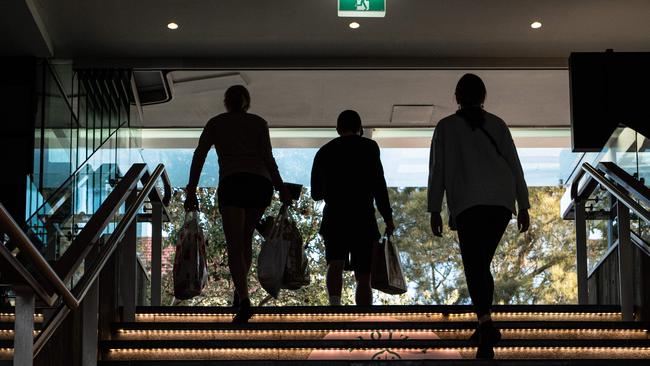RBA unlikely to further tighten despite sticky inflation
The Reserve Bank is struggling to bring demand and supply into balance in its fight against inflation.

The RBA is struggling to bring demand and supply into balance in its fight against inflation.
Developments since last month’s RBA board meeting further complicate what was already a challenging task to wind back inflation without producing a large rise in unemployment.
The board’s strategy to wind back inflation has been to bring demand into line with supply by holding interest rates at restrictive levels. Demand has slowed, led by a marked slowing in consumer spending and outright falls in dwelling investment.
But the progress so far has been less than the RBA was forecasting. By mid year the RBA was expecting virtually no annual growth in consumer spending. But following revisions to earlier quarters, that would require a largely unprecedented fall in the current June quarter. Indeed, recent readings on household spending suggest this is highly unlikely.
In contrast, the supply side of the economy is growing more slowly than demand. GDP increased by only 1.1 per cent in the 12 months to the end of March, about half the growth in domestic demand. With production not keeping up with demand, the economy is still running at relatively high levels of capacity. This is reflected in three key areas.
First, there has been rapid growth in imports to meet the excess demand.
Second, labour demand remains relatively strong as reflected in a still very low unemployment rate at 4 per cent, even though hours worked has slowed.
Third, there is persistent pressure on costs, with the result that inflation is proving sticky and well above the RBA’s target.
The board was already concerned about the inflation outlook. Recall that in the minutes of the May meeting, the board “agreed that the flow of information since the previous meeting had increased the risks of inflation staying above target for longer”.
The subsequent monthly consumer price index indicator posted a larger than expected rise and was higher than the previous monthly increase. And as the chart shows, the message from the latest reading on business selling prices is that upside risks to inflation are very real.
Therefore it’s highly plausible that the series of interest rate rises have already past the peak of their effectiveness.
Could this mean the board will judge that the case for further tightening monetary policy is now stronger than the case to hold the cash rate steady? That is probably unlikely for several reasons.
First, there is a higher bar to jump when to lift rates now would put the RBA out of step with its central bank peers. Both the Bank of Canada and European Central Bank cut official interest rates this month and the US Federal Reserve signalled that it was likely to cut rates by the end of the year. These developments provide some hope for the RBA that global inflation pressures are continuing to moderate, which ultimately should show up in lower domestic inflation.
Second, the cost-of-living relief measures in the federal and state budgets could lower headline inflation by about one percentage point.
This could see inflation fall in the September quarter this year to under 3 per cent. Even though RBA governor Michele Bullock has said the board would look through such temporary effects on inflation, the optics of lifting interest rates when inflation is within the RBA’s target range would be a bridge too far.
Equally, the most benign scenario for lower interest rates would be for the supply side of the economy to lift enough to extinguish excess demand. However, key parts of the economy are mired in chronic undersupply, including healthcare, aged care and housing, and require significant investment to lift productivity.
The most likely outlook therefore is for the board to maintain the current level of the cash rate at 4.35 per cent for the remainder of this year and at least until early next year.
Paul Brennan is the chief economist at Suncorp.






To join the conversation, please log in. Don't have an account? Register
Join the conversation, you are commenting as Logout